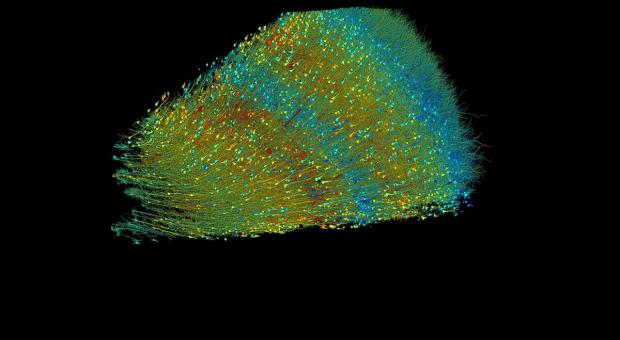
Breaking News
We Americans Need to Dig Deep into Historical Perspective
 A timeless clip of Michael Burry explaining how he used credit default swaps...
A timeless clip of Michael Burry explaining how he used credit default swaps...
 The next financial crisis won't start in a bank lobby. It's already brewing in the market
The next financial crisis won't start in a bank lobby. It's already brewing in the market
Top Tech News
 This tiny dev board is packed with features for ambitious makers
This tiny dev board is packed with features for ambitious makers
 Scientists Discover Gel to Regrow Tooth Enamel
Scientists Discover Gel to Regrow Tooth Enamel
 Vitamin C and Dandelion Root Killing Cancer Cells -- as Former CDC Director Calls for COVID-19...
Vitamin C and Dandelion Root Killing Cancer Cells -- as Former CDC Director Calls for COVID-19...
 Galactic Brain: US firm plans space-based data centers, power grid to challenge China
Galactic Brain: US firm plans space-based data centers, power grid to challenge China
 A microbial cleanup for glyphosate just earned a patent. Here's why that matters
A microbial cleanup for glyphosate just earned a patent. Here's why that matters
 Japan Breaks Internet Speed Record with 5 Million Times Faster Data Transfer
Japan Breaks Internet Speed Record with 5 Million Times Faster Data Transfer
 Advanced Propulsion Resources Part 1 of 2
Advanced Propulsion Resources Part 1 of 2
 PulsarFusion a forward-thinking UK aerospace company, is pushing the boundaries of space travel...
PulsarFusion a forward-thinking UK aerospace company, is pushing the boundaries of space travel...
 Dinky little laser box throws big-screen entertainment from inches away
Dinky little laser box throws big-screen entertainment from inches away
 'World's first' sodium-ion flashlight shines bright even at -40 ºF
'World's first' sodium-ion flashlight shines bright even at -40 ºF
See The Human Brain Like Never Before

Now, after a decade of collaboration with Google scientists, a monumental dataset—with 1,400 terabytes—has turned into the most detailed map of the human brain ever created.
"A terabyte is, for most people, gigantic, yet a fragment of a human brain—just a minscule, teeny-weeny little bit of human brain—is still thousands of terabytes," Lichtman said in a National Institutes of Health report.
The detailed 3-D reconstruction reveals beautiful structures in the brain. Neurons forming dozens of connections, mirror-image neural pairs, and networks far more complex than expected, are just some of the groundbreaking discoveries.
"I remember this moment, going into the map and looking at one individual synapse from this woman's brain, and then zooming out into these other millions of pixels," said Viren Jain, a senior scientist at Google in Nature Magazine. "It felt sort of spiritual."
The map, now part of an open-access dataset online, opens the door to new understandings of human cognition, psychiatric disorders, and the architecture of our minds.
"There is the saying that 'A map of synaptic connections is necessary but insufficient to understand the brain.' In its current form it is still missing a lot of important information, but it is a step in the right direction," Daniel Berger, a scientist in the Lichtman lab, told The Epoch Times.
Excitatory neurons, color-coded by size, with red being the largest and blue the smallest. Cell cores range from 15 to 30 micrometers.
A single white neuron receives signals from more than 5,000 blue axons, with green synapses marking the points where the signals transfer.
Neurons with long dendrites and dendrite spine. In very rare cases, a single axon (blue) made repeated synaptic connections (yellow) with a target neuron (green).
One unexpected discovery in the study was the presence of "axon whorls"—tangled loops of blue axons—which typically transmit signals away from nerve cells. These structures were rare in the sample and sometimes appeared to be resting on yellow cells. Their purpose remains unclear.

 The AI money machine!
The AI money machine!

